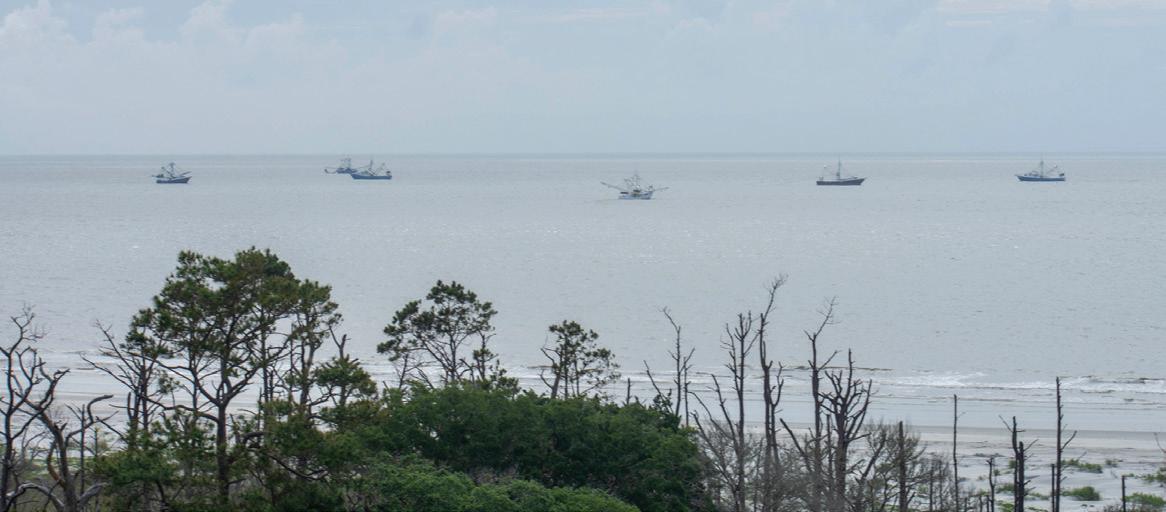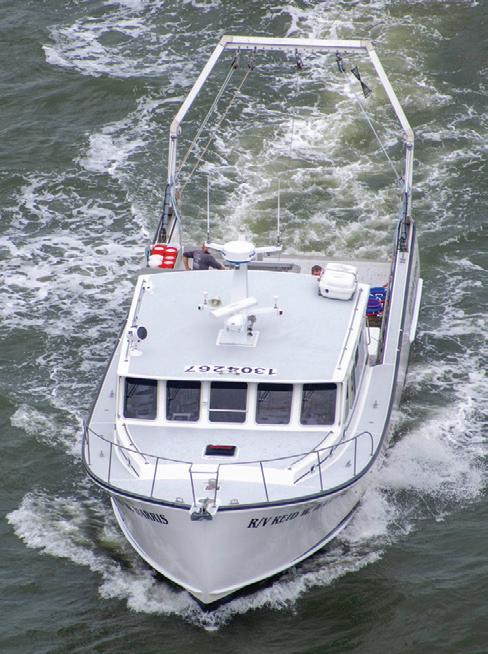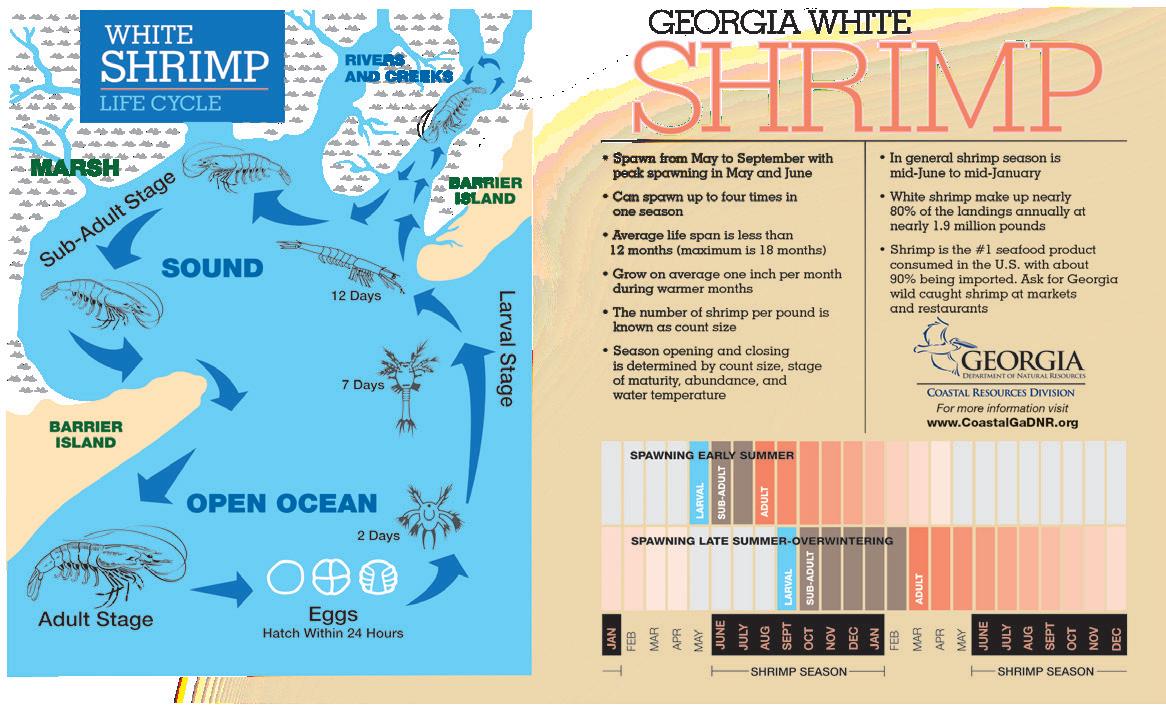
3 minute read
Shrimp Season
... opened June 1 and CRD celebrated 20,000 trawls.
Above: Shrimpers trawling on last year's opening day of shrimp season, June 8, 2021. Photo by Tyler Jones, GADNR/CRD
Advertisement
By Eddie Leonard Marine Biologist GADNR Coastal Resources Division
The GADNR Coastal Resources Division (CRD) marked a milestone in April when the division’s Ecological Monitoring Trawl Survey (EMTS) pulled its 20,000th trawl.
The ETMS, formerly conducted aboard the now-retired R/V Anna, and continuing aboard the 2020-christened R/V Reid W. Harris has been gathering data about shrimp, blue crab and finfish populations on the Georgia Coast since 1976, and represents one of the longest-running datasets of its kind on the East Coast.
Wild-caught shrimp are the most economically important of Georgia’s commercial fisheries and, many would argue, the most delicious shrimp on the market. The long-term viability of this fishery is critical to the well-being of many harvesters and coastal communities, and CRD is responsible for the management of this important fishery. To best accomplish management goals, the EMTS conducts direct sampling of coastal waters, independent of the commercial fisheries’ landings.
This data gives biologists a look at target populations before they are vulnerable to harvest. This provides a holistic and unbiased view of the animals’ population.
The EMTS samples 36 pre-determined locations along the Georgia coast once per month, 12 months per year. Six sites are sampled within six of Georgia’s estuary areas or “sounds”, (Wassaw, Ossabaw, Sapelo, St. Simons, St. Andrew, and Cumberland Sounds). The sample sites were selected to represent three “sectors” of each estuary: rivers and creeks, sounds, and offshore within state waters.
At each of these locations, the R/V Reid W. Harris pulls a 40-foot net, called a flat otter trawl, along the seabed for 15 minutes. The net is then hauled aboard the vessel and the contents are placed in a large sorting area. All animals in the catch are identified, separated by species, measured, weighed, and cataloged in a database.
The primary data collected for shrimp are abundance, size, and reproductive condition. While shrimp and crabs are the primary targets, all species captured are recorded. This “bycatch” data collection was permanently added to the sampling effort in 2003, and provides information on several species of interest to commercial and recreational fishers.
The data are also a very useful tool for monitoring general estuary health. Once the data are collected and stored in the database, they can be used for a variety of purposes from informing management decision making, inclusion in federal compliance reporting, and more.
The most immediately impactful use of the data is in helping to decide on the annual opening and closing date for the commercial and recreational food shrimp harvest in Georgia’s state waters. According to Georgia law, the fishery may be open in the spring as early as May 15 and will close on December 31, unless extended.

R/V Reid W. Harris heading out to trawl. Photo by Tyler Jones, GADNR/CRD
The actual opening and closing dates must be established by the Commissioner of the DNR. The Commissioner receives a recommendation from CRD on when to open and close the fishery from the Shrimp Advisory Panel (SAP). The SAP is a group of citizens from the commercial fishing industry, academia, and other representative user groups who meet on at least a biennial basis to review and discuss current conditions and make a recommendation to the Commissioner for the spring opening and winter closing.
The Commissioner’s decision is constrained by law to shrimp of a certain size range, but reproductive status and shrimp abundance are also considered.
The EMTS survey provides the only scientific data considered by the SAP, who also discuss industry forces and other observations.
Each May, CRD closely evaluates and characterizes the status of the shrimp population as harvesters prepare for the spring opening. This May was no different.
With a relatively warm winter and no major rainfall or drought conditions at hand, we should see a good harvest in the spring in Georgia’s state waters. Preliminary data from the EMTS for March and April are showing white shrimp in good numbers and early spawning condition.
To learn more about the EMTS, visit CoastalGaDNR.org/ EcologicalMonitoringSurvey.











